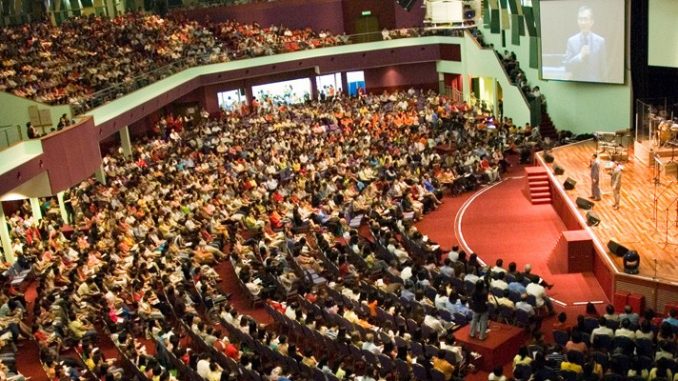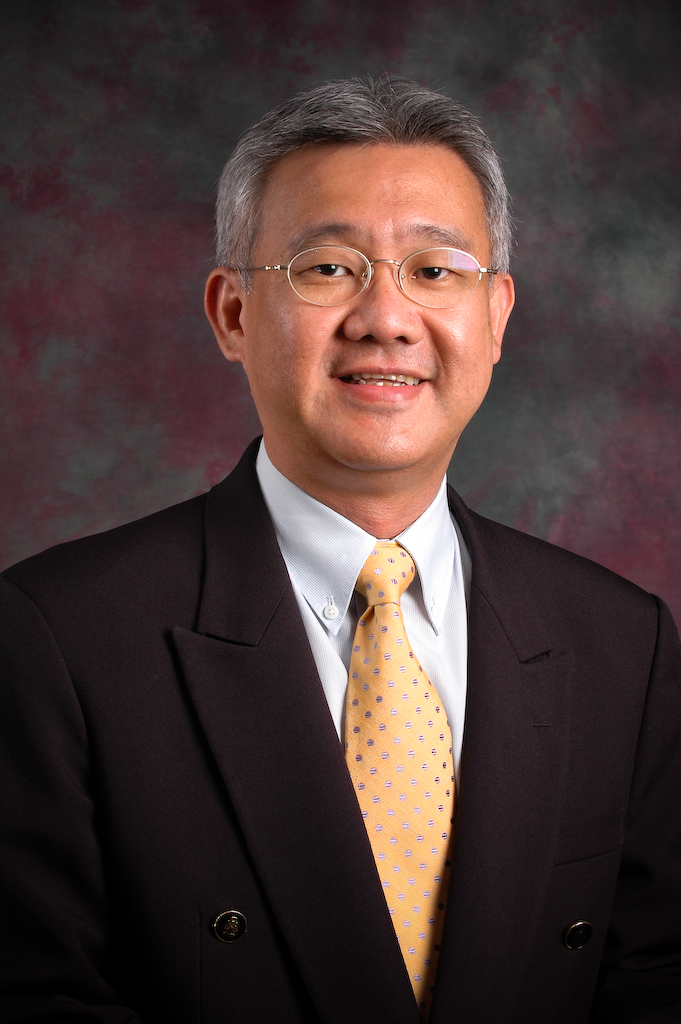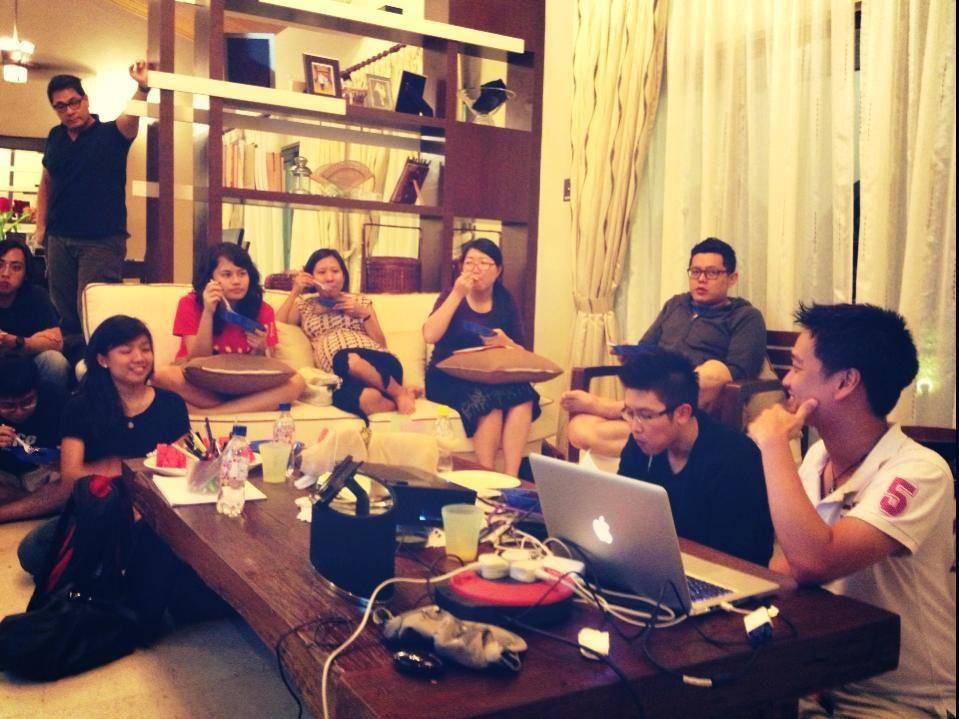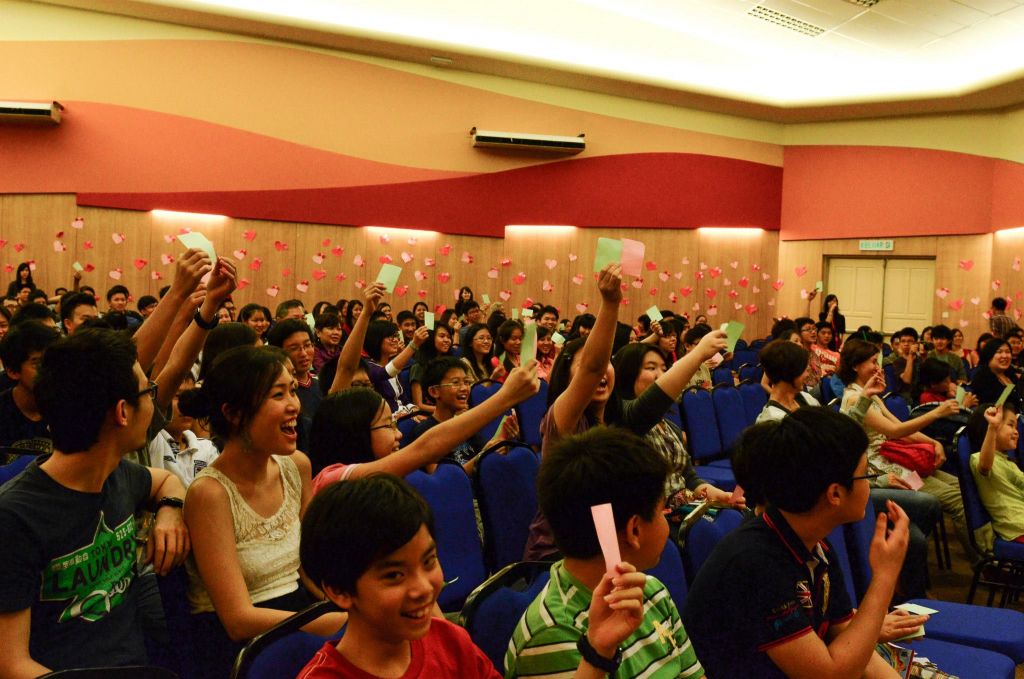
Using the Cell Church strategy in 1994 since its inception in 1980, DUMC worshipping at the Dream Centre in Section 13, Petaling Jaya has grown to about 5000 worshippers in weekly attendance. The English congregation being the largest at 3000, there are also five other language congregations, namely Chinese, Bahasa Malaysia, Tamil, Myanmar and Nepalese. All this within a period of 36 years is impressive, especially since they began with only 25 members, under the leadership of Dr Dato’ Daniel Ho, Dr Ling Khoon Chin and Dr Wong Cheng Mung.
What is impressive is that they currently have over 320 cell groups, an achievement that is worth learning from. Their Cells are made up of 75% of the church’s weekend attendance. To be a member of DUMC, one has to be a member of a Cell Group. To Senior Pastor, Chris Kam, there is no compromise in this matter as cell groups provide the basic building blocks for community identity and involvement. Pastor Kam and his wife, Stella Ho are also a by-product of the cell group ministry in the Overseas Christian Fellowship (OCF) in Monash University, Clayton, Victoria, Australia.
According to the DUMC website, “as a cell church, DUMC is built on the principle that each one of us are called in a special way to share our faith with others. Christian life doesn’t just exist within the walls of the church but it lives & breathes in our daily life.” Therefore, the church views the Cell Groups as “the veins of DUMC; through this, everyone can grow, mature as believers and also share the good news of Jesus Christ to others.”

Pastor Kam emphasises: “We believe in discipleship through the Cell Groups. Members meet together for a time of worship, discuss and apply in practical ways the sermon of the week. They also work on reaching out to their neighbourhood (or “oikos”).” The reason why the Cell Group church model was adopted is because the leaders believe that it is the best model for multiplication and growth, especially when the church faces persecution some day in the future. The DUMC model is adopted from Faith Community Baptist Church in Singapore, which in turn, is traceable to the Paul Yonggi Cho’s mega church in Korea.
Unlike the Meta Churches (a term which now describes big churches with a number of ministry groups rather than Cells), the life of the Cell Church revolves around the activities of the cell groups. DUMC members are assigned to a Cell Group nearest to their homes in order for them to have an impact on their community. “If members prefer to attend a Cell Group elsewhere, they are allowed the flexibility,” Wan-Kuan Ann, a zone leader himself, elaborates. “The rationale for Cell Groups to exist within one’s “oikos” is so that eventually when DUMC decides to plant new churches, the Cell Groups in each zone would become part of the local church.”
Formula for Church Growth
Statistics show that the more Cell Groups engage with the community, the faster they multiply. Besides meeting for their regular Cell meetings, the members also engage with the community, either through having supper, doing hospital or home visitation, or other forms of social interaction. The Cells exist for two reasons – Evangelism and Edification. If it fails to emphasise on Evangelism, the Cell Group becomes too complacent and inward looking. “This is the biggest danger for any Cell Group,” elaborates Wan-Kuan. “The Cell Group leader is taught to navigate the group through different phases – Early Stage, Conflicts Stage, Community Stage, Outreach Stage and Multiplication Stage. After the Conflicts stage, the Cell Group leader would have to navigate the group to start engaging with the Community. If the Cell Group is not growing after two or three years, the zone leader has to make a tough decision to disband the cell group. Members are then re-assigned to join other Cell Groups.”

Cell Group leaders play an important role in the growth of the Cell Groups. The church realises that the success of each Cell Group to multiply itself depends a lot on the Cell Group leaders. They are provided in-house and on-the-job training so that they can navigate the groups into Community and Outreach stages that helps the Cell Groups to multiply. There are many training programmes planned for the Cell Group leaders as well. For example, Lead 2017, a three-day annual conference in June next year, will provide a great time for all Cell Group leaders, as well as leaders from other local churches, to learn from “inspirational church leaders from different parts of the world” (click here for more information). Selection of leaders are based on their relationship with God and their availability to serve.
Ultimately, DUMC has a bigger vision – they hope to plant new churches and satellites. Dream Centre@Ipoh, which currently has 150 members, was never being part of a big church planting plan, but it was birthed from some members of cell groups who returned to their hometown to work. “We had a few families who started their own Cell Group there. The numbers just grew and soon, they were able to meet in their own church premises,” Wan-Kuan says. “This is the kind of organic growth that we want to see. Hopefully, this will also happen with our Orang Asli community, who are currently meeting as Cell Groups in their own homes once a week.”
A Solution for Returning Students
Reflecting on the Cell Church model that DUMC is, as I think about it, I remember back in Australia, we learnt that there is a big casualty of young believers who returned to Malaysia after their studies. We were told that the reason for the high casualty is because these young believers failed to integrate into the local church while studying in Australia. When they finally return to Malaysia, they also fail to integrate into the local church.

Perhaps, this is one reason why DUMC was able to attract a number of OCFers. The Cell Groups were able to provide a warm fellowship to returning students from Australia, something that they were already familiar with, either when they were with the Navigators or OCF. Cell Groups were able to meet their needs and soon more families joined the church. This is the difference between a Cell Church and one without the cell group ministry.
|Share The Good News|




Leave a Reply